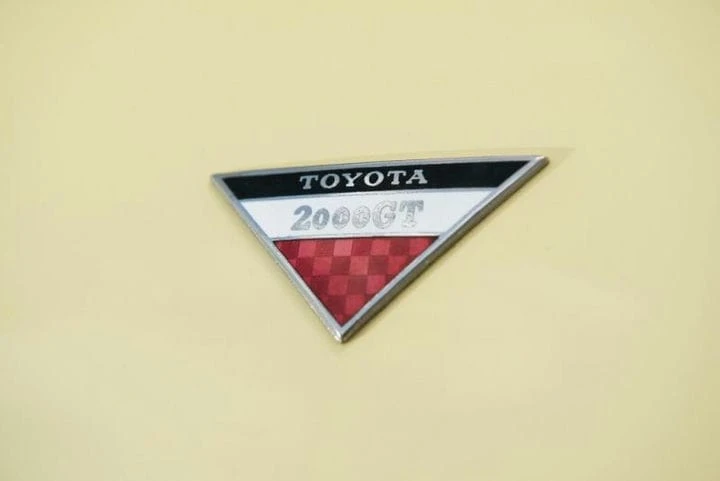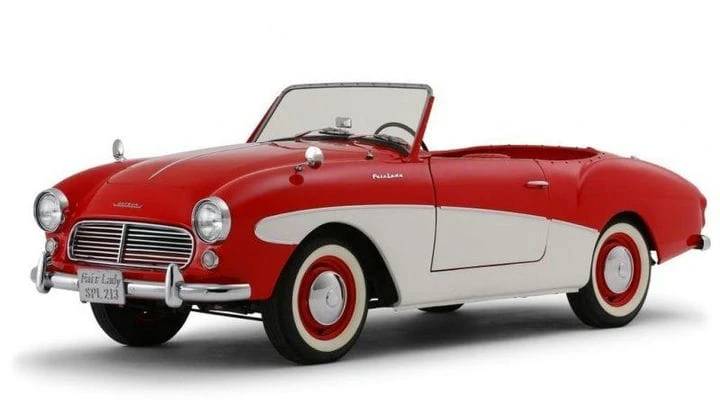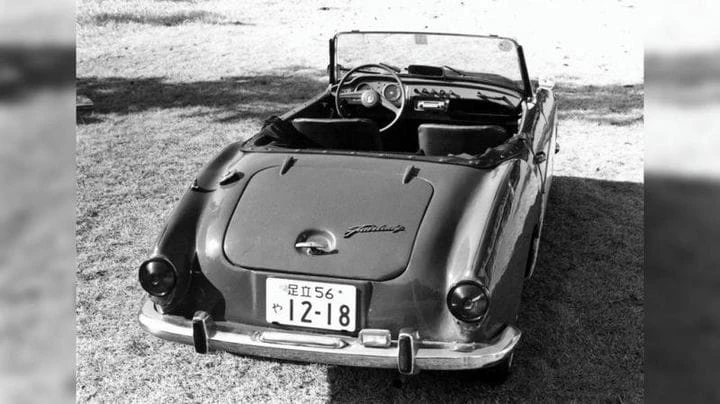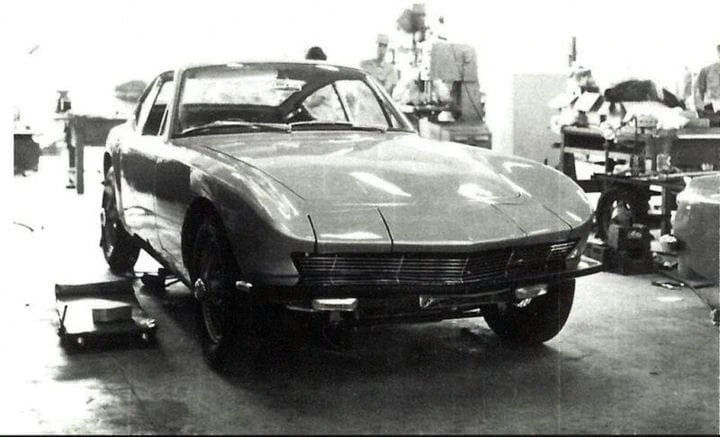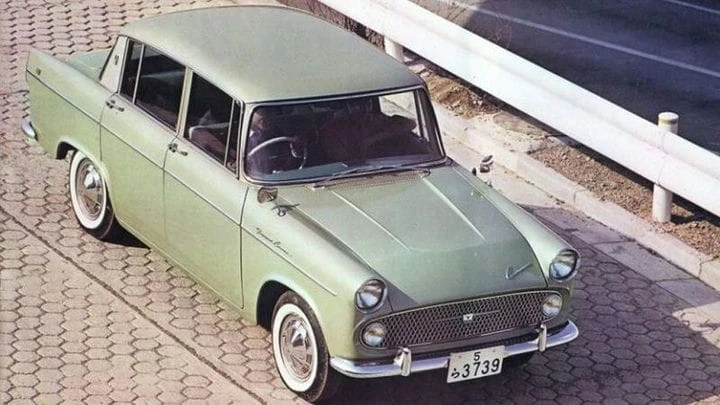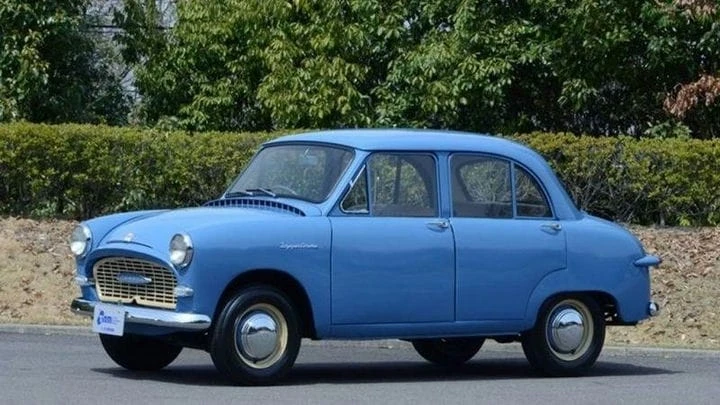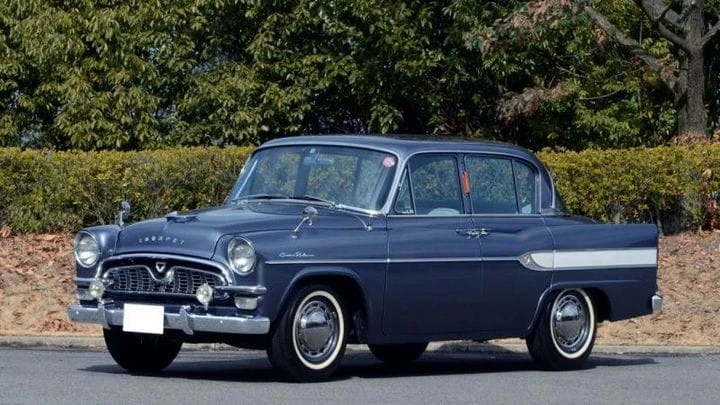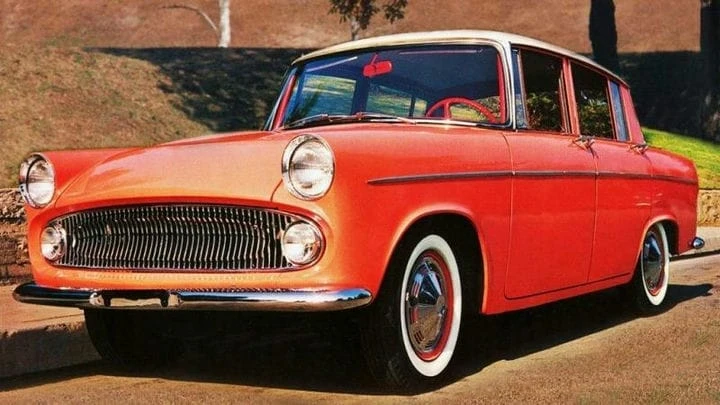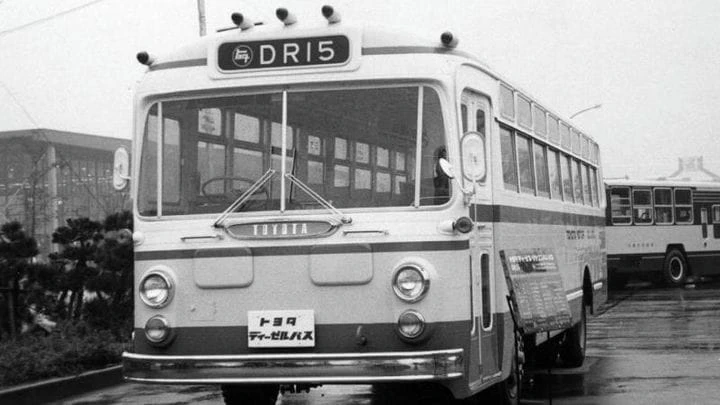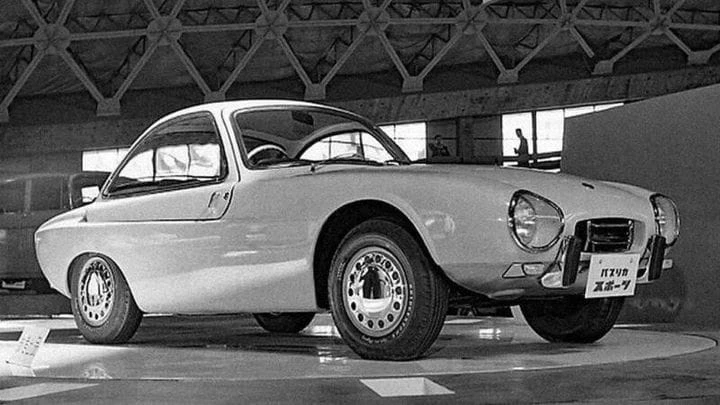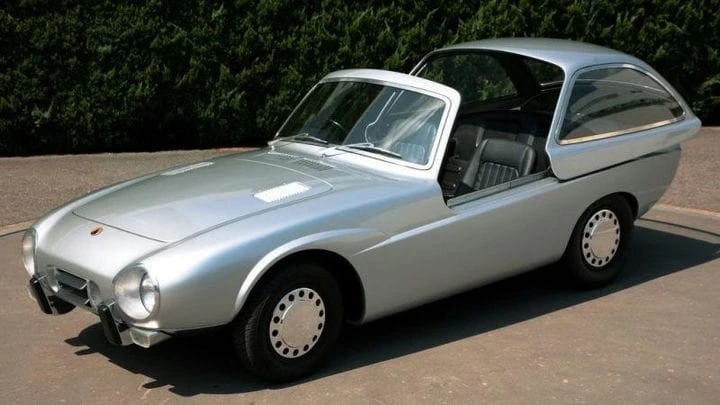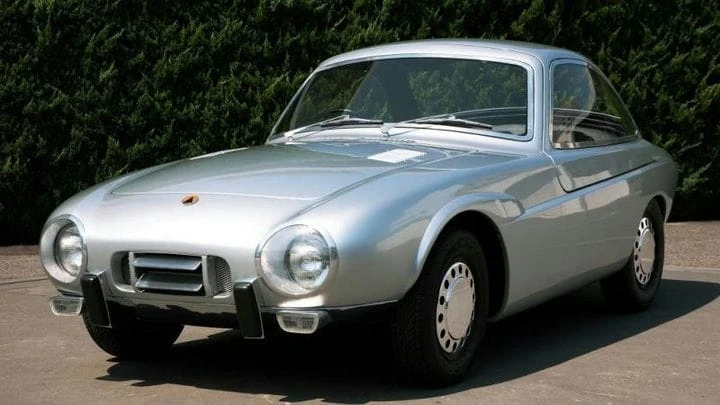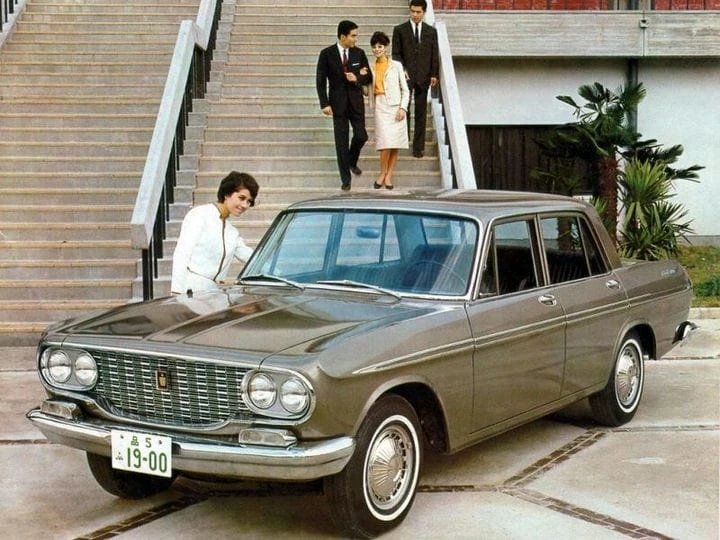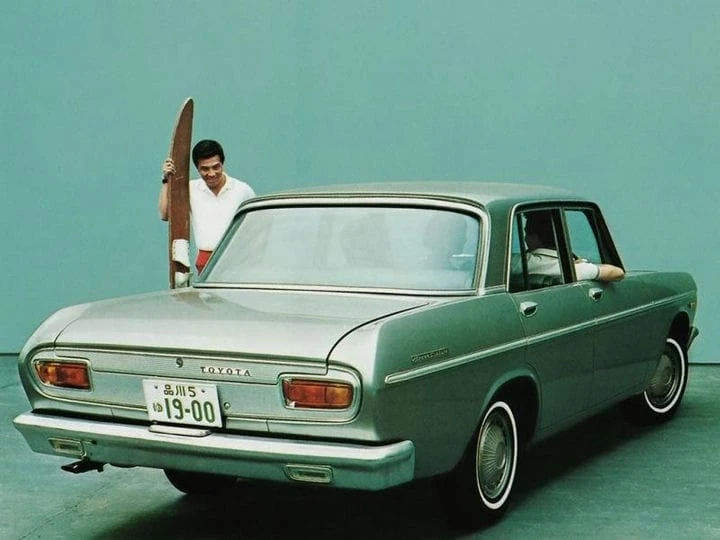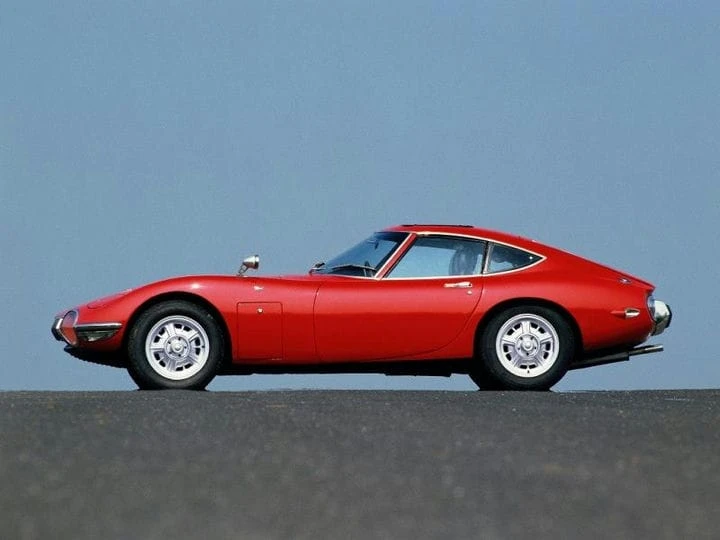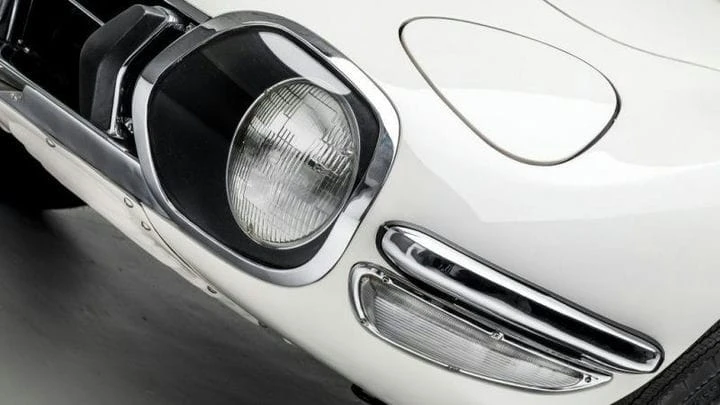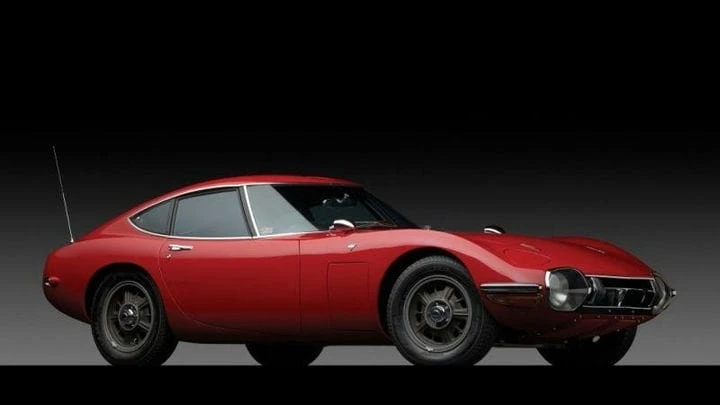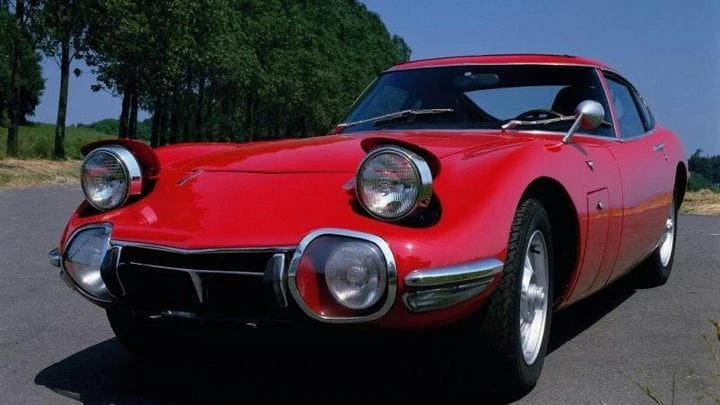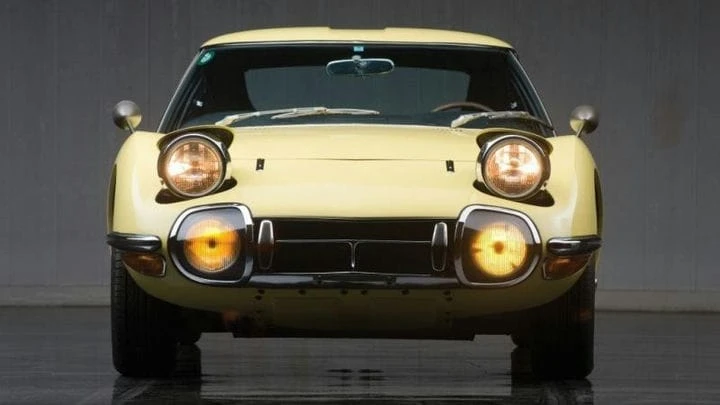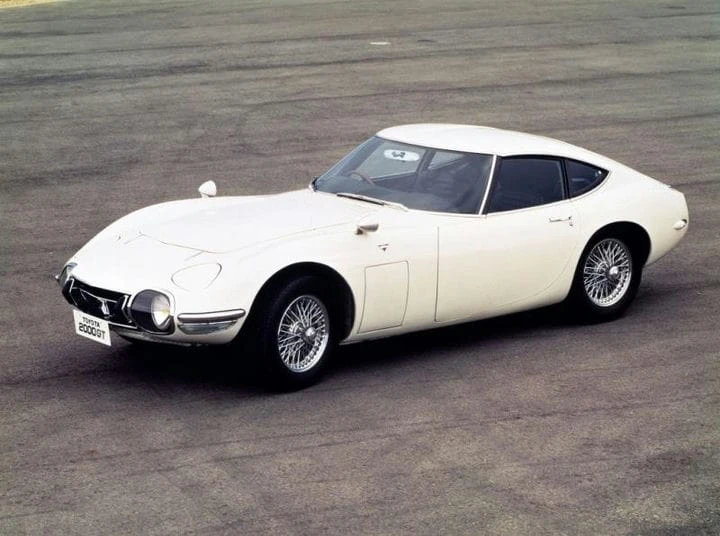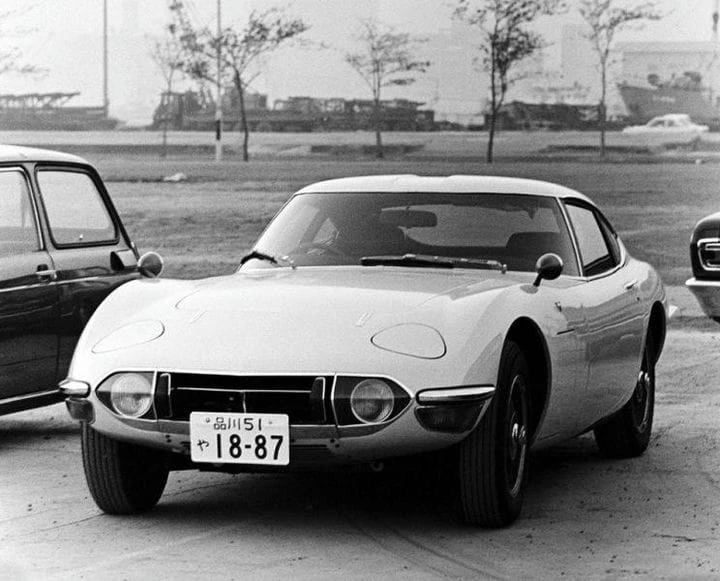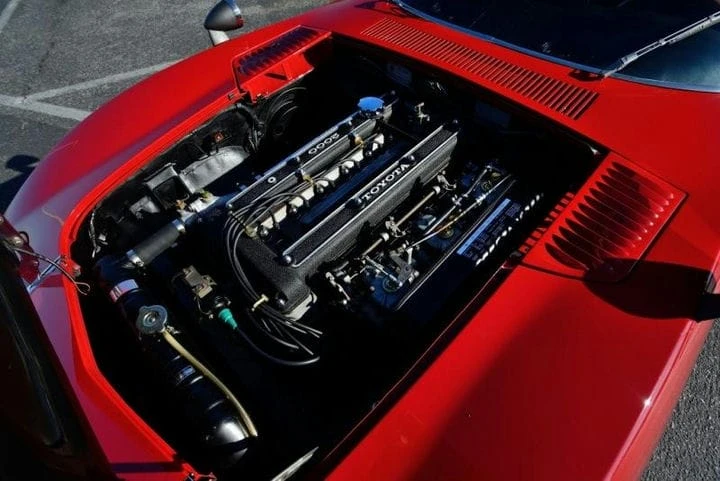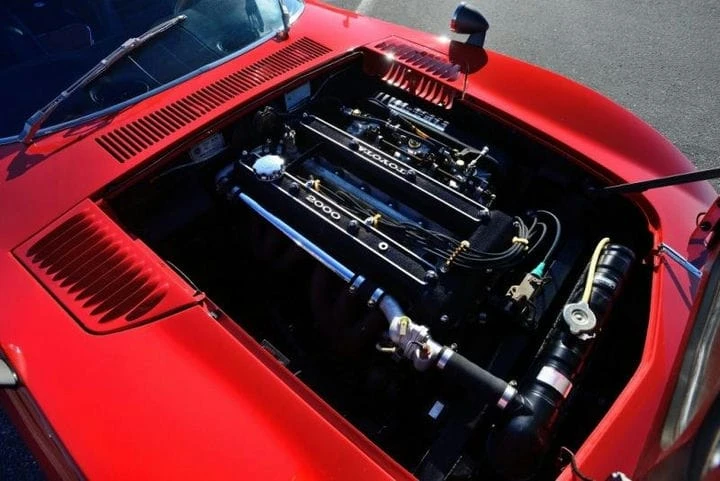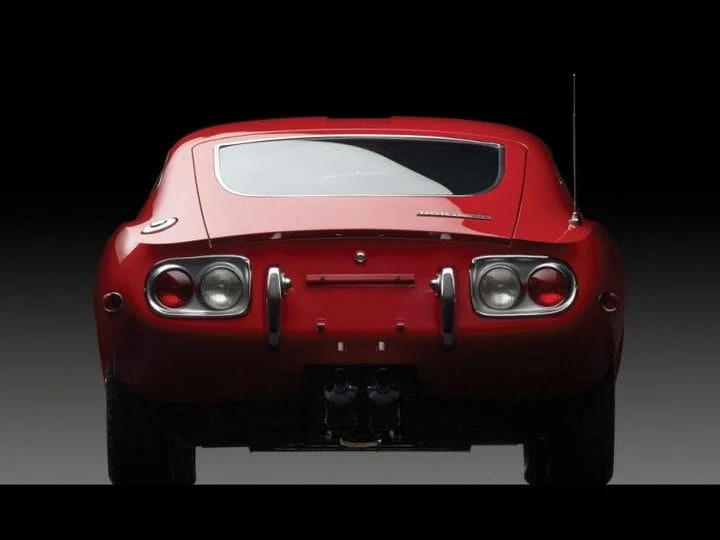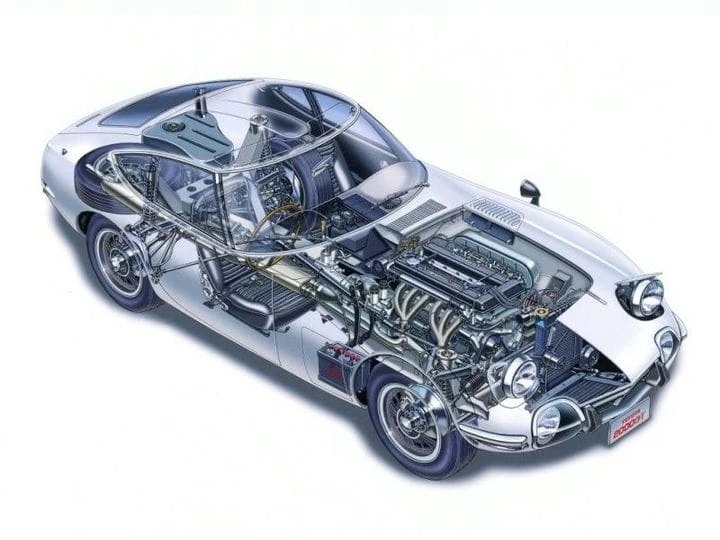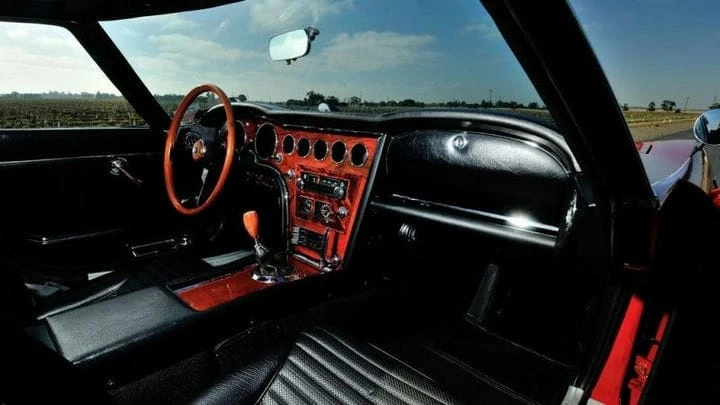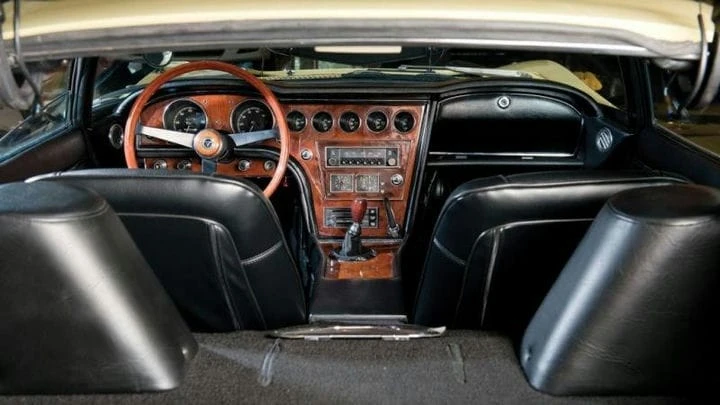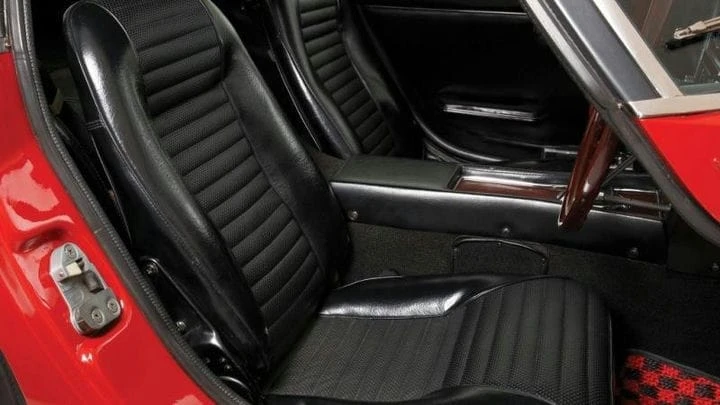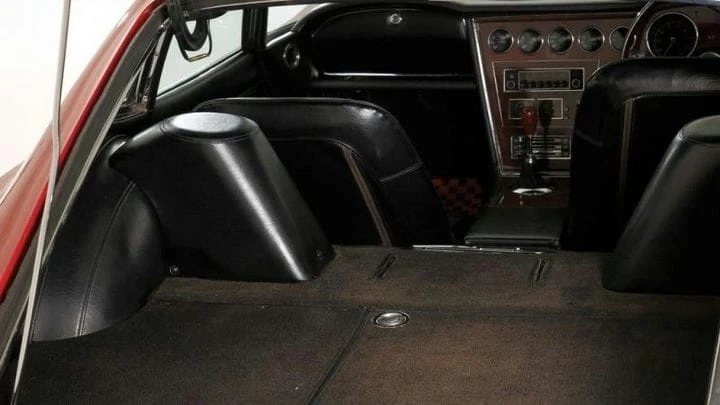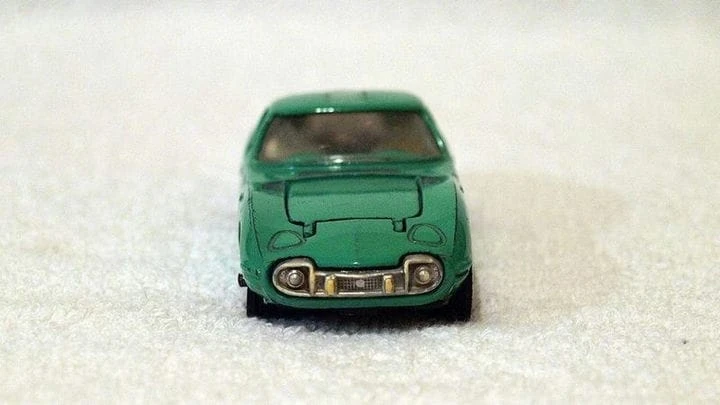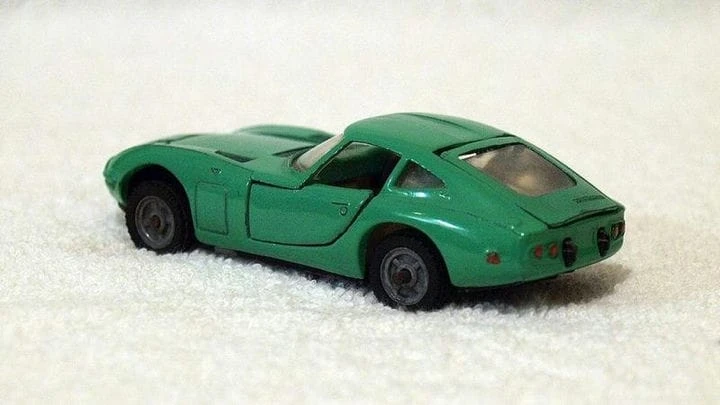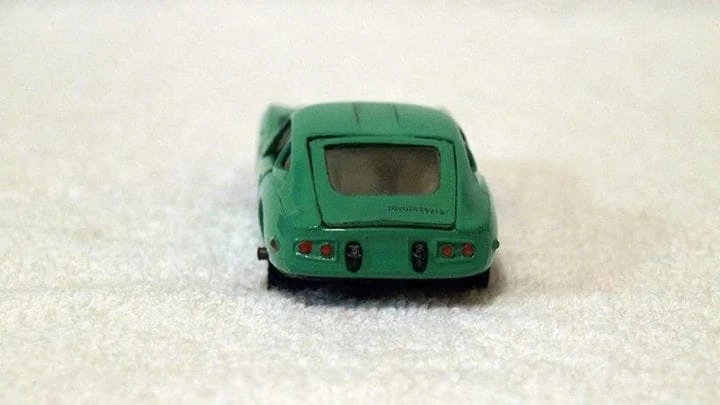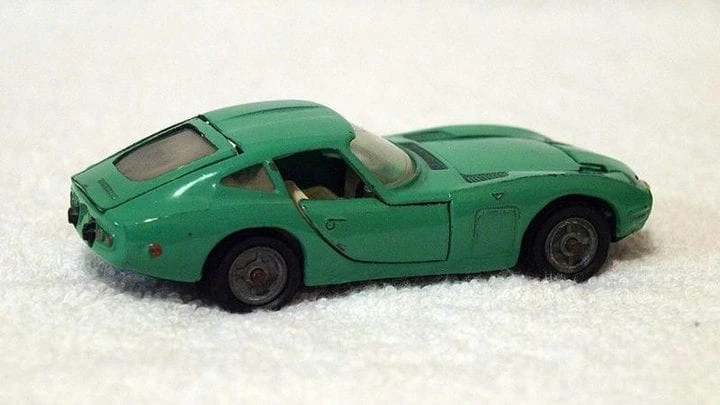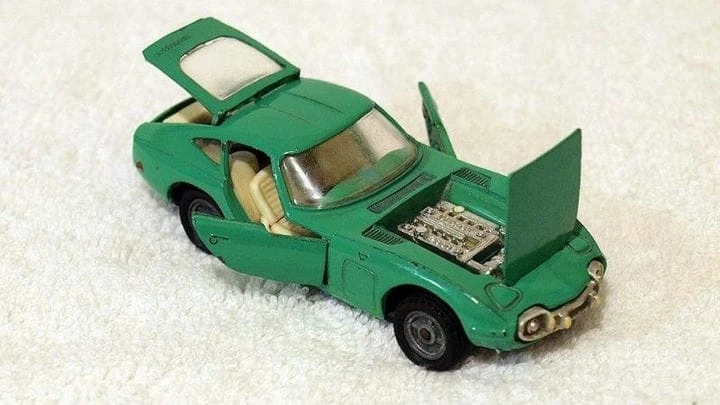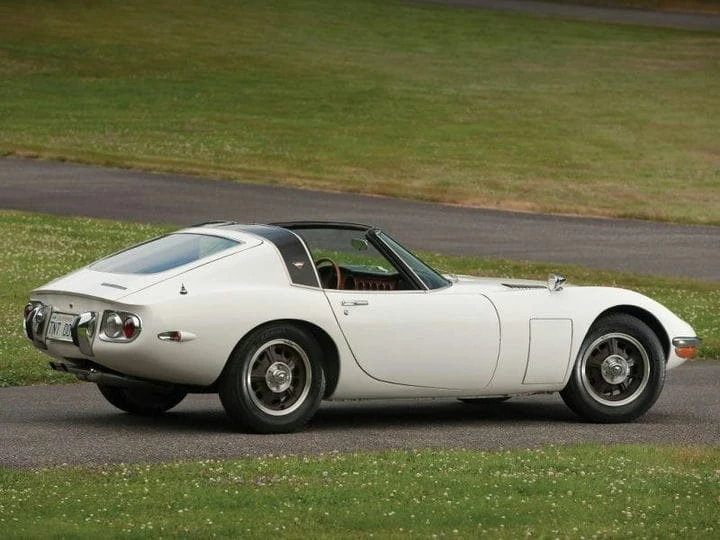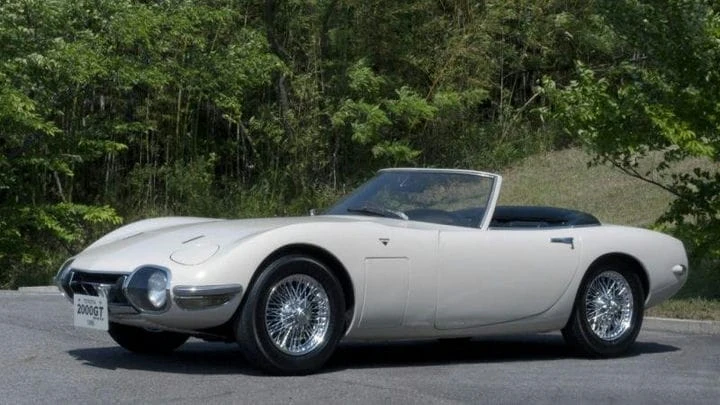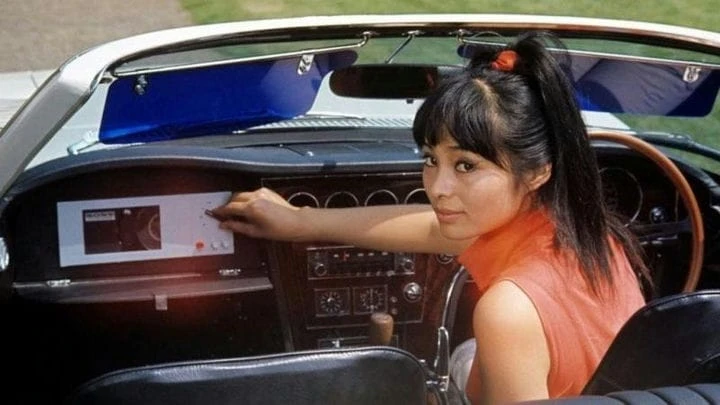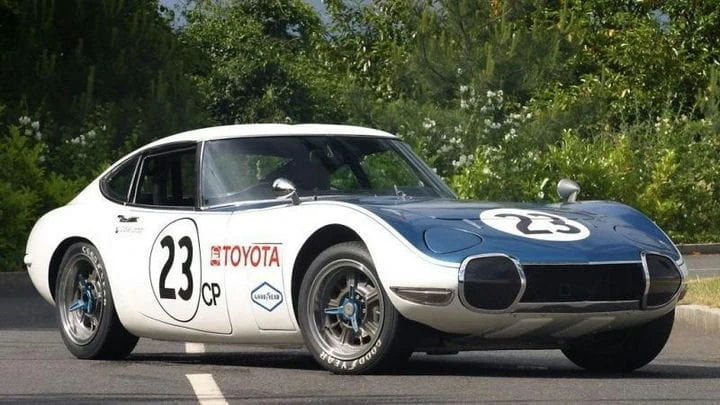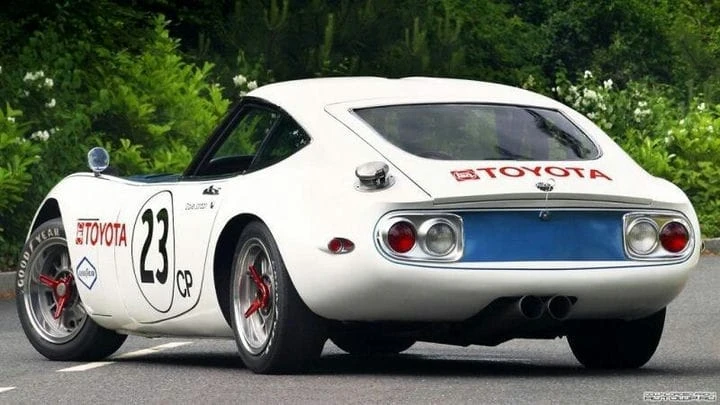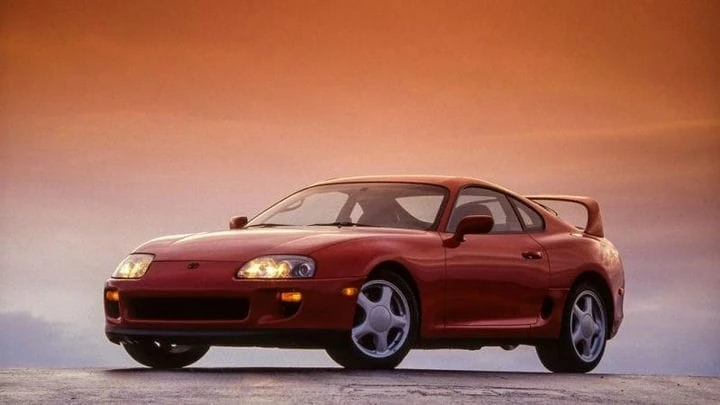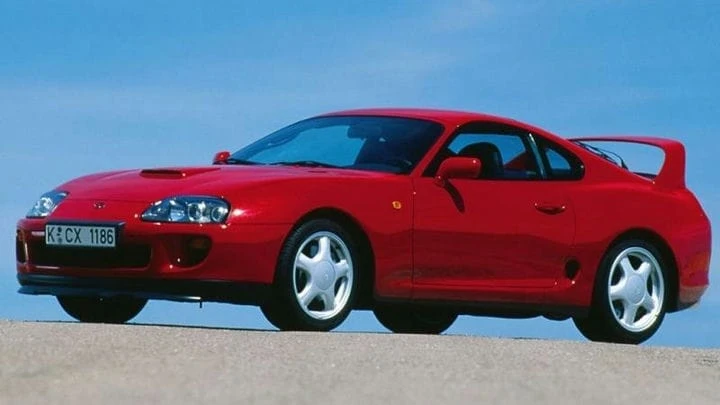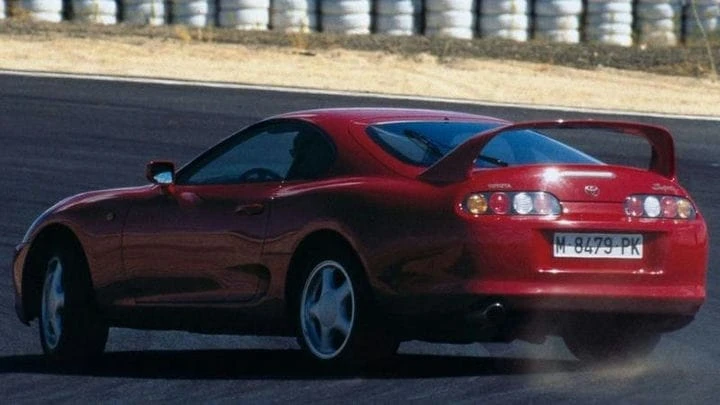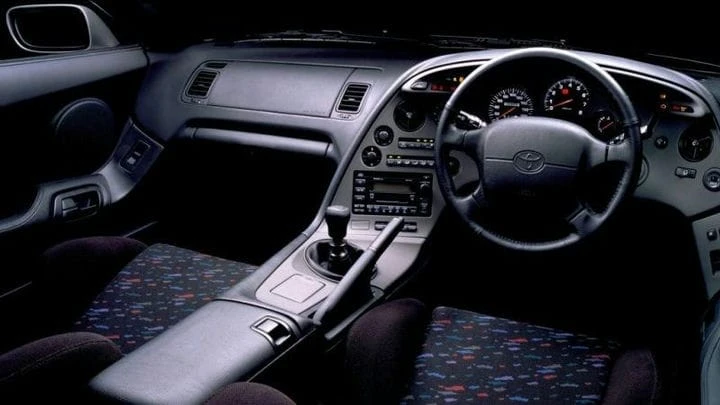Nissan plus Yamaha equals Toyota: how the Toyota 2000 GT coupe appeared and why it failed
The Japanese auto industry is distinguished by a variety of models of various classes and purposes. There are also sports cars among them – both professional “fighters” based on ordinary four-doors, and spectacular coupes. Honda NSX, Nissan 350/370Z, Silvia and GT-R, rotary Mazda with RX index and many other “hot and warm” cars are loved both in Japan itself and far beyond its borders. An important place on the sports pages in the history of the Japanese automobile industry is occupied by the Toyota Supra, the forerunner, progenitor and prototype of which back in the sixties was the bright, two-seater and very rare Toyota 2000GT. Today we will understand how and why this car appeared, and also why the “musical motorcycle” company Yamaha is directly related to the Toyota sports car.
A salesman dozing by a fire wakes up to find that he has been burned by a dragon.
The Japanese auto industry is distinguished by a variety of models of various classes and purposes. There are also sports cars among them – both professional “fighters” based on ordinary four-doors, and spectacular coupes. Honda NSX, Nissan 350/370Z, Silvia and GT-R, rotary Mazda with RX index and many other “hot and warm” cars are loved both in Japan itself and far beyond its borders. An important place on the sports pages in the history of the Japanese automobile industry is occupied by the Toyota Supra, the forerunner, progenitor and prototype of which back in the sixties was the bright, two-seater and very rare Toyota 2000GT. Today we will understand how and why this car appeared, and also why the “musical motorcycle” company Yamaha is directly related to the Toyota sports car.
Start: not Toyota yet
Back in October 1962, the Japanese companies Nissan and Yamaha began a common project – work on a new model with a clear sports bias. The compact coupe, as conceived by the creators, was quite consistent with the spirit of the times, because light, but quite powerful and at the same time relatively affordable cars were popular in the world at that time. The open car Datsun Fairlady, which became a “donor”, was seriously modernized, having received a load-bearing closed body instead of a frame structure without a hard top, and a serious two-liter engine appeared under the new hood, in which a pair of camshafts moved from the “bottom” to the cylinder head. The sports coupe was supposed to stop with disc brakes on all wheels instead of the old drums. In a word, technically the former roadster was significantly different from the source, and for the better.
Datsun Fairlady – “platform donor”
Datsun Fairlady – “platform donor”
Datsun Fairlady – “platform donor”
But what about Yamaha? Just with everything related to engineering, after all, the Nissans were engaged exclusively in the interior and exterior, that is, the design part, while Yamaha engineers worked on the design of the engine, chassis and suspensions installed on subframes that were progressive even by today's standards.
And then the unexpected happened: by the time the construction of prototypes for sea trials began, Nissan actually withdrew from the project, switching to its own developments related to the Datsun Fairlady roadster, and leaving Yamaha specialists, if not with nothing, then one on one with “perspective”. By the way, the contract included not only the development of a sports coupe for Nissan, but also the transfer of two developed prototypes. And the Yamaha guys did it! They brought to readiness the same overhead two-liter engine, equipped with a pair of Solex carburetors and developing quite decent 120 hp even by today's standards. Given the small curb weight, this promised the car very interesting dynamic characteristics.
Having started building running models in the spring of 1964, by the fall, Yamaha engineers had completed work on prototypes with the symbol A550X. These prototypes with all-metal bodies were handed over to Nissan.
Photo: Yamaha A550X prototype
However, in addition to the cars provided for by the agreement, Yamaha made the third one for Nissan! The most interesting thing is that Yamaha did not assemble this own version by themselves, having made an order to a third-party contractor. The highlight of this red coupe and with the A550X index common with the prototypes for Nissan was the fiberglass body. But the prospects for this own project for Yamaha itself were rather vague, because this company did not have the necessary production facilities, nor special experience in finishing cars to the commercial state of a commercial product.
Continuation: already with Toyota
In the early sixties, Toyota's lineup consisted primarily of utility models. These were compact and modest sedans Corona, Tiara and the famous Toyopet, pickup trucks, early Land Cruiser SUVs and even trucks with buses.
From small cars to buses: in the sixties, Toyota produced almost any car. Except perhaps the sports coupe
From small cars to buses: in the sixties, Toyota produced almost any car. Except perhaps the sports coupe
From small cars to buses: in the sixties, Toyota produced almost any car. Except perhaps the sports coupe
From small cars to buses: in the sixties, Toyota produced almost any car. Except perhaps the sports coupe
From small cars to buses: in the sixties, Toyota produced almost any car. Except perhaps the sports coupe
From small cars to buses: in the sixties, Toyota produced almost any car. Except perhaps the sports coupe
From small cars to buses: in the sixties, Toyota produced almost any car. Except perhaps the sports coupe
From small cars to buses: in the sixties, Toyota produced almost any car. Except perhaps the sports coupe
From small cars to buses: in the sixties, Toyota produced almost any car. Except perhaps the sports coupe
At the same time, in 1962, the company introduced the Toyota Publica Sports concept at the Tokyo Motor Show, but this little fun class B car was very far from the “big sport”, better known as “gran turismo”.
The highlight of the Toyota Publica Sports model is the sliding aircraft “lantern” of the cabin
The highlight of the Toyota Publica Sports model is the sliding aircraft “lantern” of the cabin
The highlight of the Toyota Publica Sports model is the sliding aircraft “lantern” of the cabin
The highlight of the Toyota Publica Sports model is the sliding aircraft “lantern” of the cabin
But having gained momentum and having a fairly wide model range, the Japanese swung at a new goal – a sports car that could withstand the eminent leaders of the global automotive industry. It was primarily about Porsche, Jaguar and Mercedes cars, but Toyota immediately wanted their car to be massive enough and not prohibitively expensive, as was typical for the Mercedes gullwing.
The development of such an unusual car was not carried out by ordinary engineers specializing in mass models: in 1964, a separate department was organized to create a sports Toyota, headed by the racing head Jiro Kawano. In his submission was a quintet of the best engineers of the company, who were not interfered with by either management or technologists. The only condition was that the new car had to be born as quickly as possible, because by the new year, the top managers of the brand should have received on the table not just sketches and drawings, but also a large-scale model of the future sports car.
As often happens in such cases, several of the best sports cars of those years were purchased for the factory “stable” to study achievements and learn from experience. Of course, these were the Jaguar E-Type and Porsche 911, which the Japanese initially looked up to. In addition, several more “British” (Triumph, MG and Lotus) were purchased, as well as a “native” Honda S600 for engineers from the Land of the Rising Sun. Comparing all these designs “in open combat”, Toyota experts immediately abandoned the rear location of the power unit, considering it too irrational – they say, while the weight distribution is very unsuccessful, and the handling becomes specific. But the layout and proportions of the I-Taipa, as they say, went to the Japanese.
Remember this silhouette…
The work of Toyota on a fundamentally new car quickly ceased to be a secret. And when Yamaha's management found out about this, it immediately decided to contact Toyota's “tops” in order to offer them their developments – more precisely, the same A550X project that remained as ballast in Yamaha's storerooms, which did not have the production capabilities to implement it.. True, in reality, instead of a finished car (more precisely, a running layout), Toyota representatives saw a prototype in a semi-disassembled state, but Yamaha had all the technical documentation for this prototype. However, Toyota did not take ready-made drawings and made a car according to them, but concluded an agreement with Yamaha at the end of 1964 to develop a sports car. At the same time, the design of the car body was approved by the Toyota “tip” even earlier,
But the spinal frame that underlay the body and the chassis with double-lever suspensions clearly had their roots in the power base and chassis of the Yamaha prototype. But Toyota engineers abandoned the four-cylinder “heart” with a volume of 2 liters, replacing it with a two-liter engine, but in-line and six-cylinder. It was taken from the Crown sedan, and the task of the Yamaha specialists was to “cheer up and warm up” this unit.
Toyota Crown shared its engine with the “two thousandth” coupe
dream car
Just four months after the signing of the contract between the two companies, assembly of the running model, which received the designation 280A / I, began at Yamaha's production facilities. Surprisingly, the first pancake did not come out lumpy – the tests confirmed the correctness of the chassis settings, which, however, did not differ in stable behavior at high speeds. Nevertheless, it was a success – more precisely, a rather solid application for it, because the car performed well not only on public roads, but also on the race track! The model received a fairly good weight distribution (48:52) due to the fact that the driver and passenger sat directly in front of the rear axle, loading it with their own weight.
True, in profile it looks like a British E-type or some Ferrari of those years?
Well, the steered wheels were loaded with the weight of the power unit. The low and swift outwardly car turned out to be very streamlined, although, for obvious reasons, Toyota did not do any purge in the wind tunnel at that time.
In addition to the usual round headlights, the new coupe also had a pair of rising “eyes”. Drag coefficient (Cx) – only 0.28
In addition to the usual round headlights, the new coupe also had a pair of rising “eyes”. Drag coefficient (Cx) – only 0.28
In addition to the usual round headlights, the new coupe also had a pair of rising “eyes”. Drag coefficient (Cx) – only 0.28
In addition to the usual round headlights, the new coupe also had a pair of rising “eyes”. Drag coefficient (Cx) – only 0.28
“If the Toyota 2000GT is an impressive mechanical design on paper, and even if it looks beautiful in photographs, nothing will prepare you for your first look at it. The photos just don't convey it. Our styling experts found flaws in the detail design and some unfortunate surface changes, but no one denied that overall the car looks impressive and purposeful. Confirmation of the latter conclusion is easy to obtain: one of our employees said that during the trip home for lunch, he was followed by cars for the first time. He built two VWs, an MG, a couple of Ford pickups, and one police car in two 10-minute runs!
Road & Track magazine, June 1967
When the prototype was shown at the Tokyo Motor Show in the fall of 1965, the novelty made a splash.
The spectacular appearance worked akin to an exploding bomb, which, with its fragments, could great “cut” the market, which at that time was almost completely dominated by the British and Germans. Toyota got its way, loudly declaring itself with the help of a practically finished sports car that looked bright and, according to the creators, had to go fast.
Need for speed: the fact that this car will be fast, it was clear even when it was just standing
In order to become a production car, this “gran turismo” took a year and a half. All this time, Toyota and Yamaha have been fine-tuning the design and preparing the car for launch in a series. Already in the spring of 1967 (that is, just three years after the start of the project!) Toyota 2000GT was launched into small-scale production.
In the parking lot, 2000GT looked, if not a stranger from other worlds, then a guest from the future, which has already arrived
They decided to release the new Toyota at Yamaha's production facilities, building new body, engine and assembly shops. Of course, quite a lot of parts were produced by Toyota itself, supplying them to the Yamaha factory. The production was non-automated, and the final technical control was carried out by Toyota on its own, not trusting this important operation to partners.
A little about technology. The two-liter “crown” in-line “six” received a new cylinder head with two overhead camshafts, and as many as three (!) Two-chamber carburetors appeared in the power system, which increased engine power by almost one and a half times – up to 150 hp.
The in-line twin-shaft “six” fit well into the narrow engine compartment
Agree, quite a good figure for two thousand atmospheric “cubes” of working volume even in our time – that's how much, for example, Mazda's modern gasoline “fours” develop. Looking ahead a little, we note that at the very end of production, a deformed version appeared under the hood of the “two thousandth”, in which the working volume increased to 2.3 liters, and the power, on the contrary, fell to 140 “horses”.
“As befits a good “six”, the engine starts with a slight turn of the key after a smooth and short rotation of the starter. The motor likes to idle at 1200 rpm or so, but there is no mechanical rumble to be heard at idle or on the road. The sound deadening here is really worked out, but listening to the unit with the hood open (which is also a delightful visual experience) shows that the engine is mechanically quiet to begin with, especially for a chain driven design.”
Road & Track magazine, June 1967
To digest such power and 170 Nm of maximum torque, fitting the unit into the narrow space of the spinal frame, Toyota had to borrow a transmission from … a truck of its own brand.
If the gearbox was taken from the truck, then the taillights were borrowed without any changes from … Toyota buses
But since the box was a four-speed, I had to hastily add a fifth gear to it. For a more complete realization of the potential, a reduced slip gearbox was installed in the rear axle, and disc brakes on all wheels were responsible for quick deceleration from high speeds.
And do not rush to smile; The 2000GT sprinted from 0-60 in just over ten seconds, breaking off at an impressive 220 km/h. We remind you that it was 1967, when the USSR had just begun to produce a one and a half liter UZAM-412 engine, which allowed the “four hundred and twelfth” to accelerate to 145 km / h …
Everything in the design was subject to speed and control, but at the same time, the 2000GT is by no means a Spartan “cramps”
“The gearbox is quiet and generally smooth, and the gear ratios feel right for the car, with the possible exception of the first one. But on our test car, the shifting effort was so great that the tech editor got a callus on his ring finger, and the 2nd gear synchronizer was ineffective for shifting gears. Fifth gear makes a slight whine that isn't enough to bother any of us, but reminds us that it's an indirect gear ratio. There was no noise from the main gear – a kind of feat in a car with units mounted on the frame.
Road&Track magazine, June 1967
Yamaha specialists were engaged in the interior of the car. And since this Japanese company specializes in the production of musical instruments, the “woodworkers” of its musical department completed the interior trim at the highest level, uncharacteristic of “consumer” cars.
Luxurious interior, right? This realm of leather and wood could be a “station for two” and their luggage. Everything, as in the best houses in Italy and England …
Luxurious interior, right? This realm of leather and wood could be a “station for two” and their luggage. Everything, as in the best houses in Italy and England …
Luxurious interior, right? This realm of leather and wood could be a “station for two” and their luggage. Everything, as in the best houses in Italy and England …
Luxurious interior, right? This realm of leather and wood could be a “station for two” and their luggage. Everything, as in the best houses in Italy and England …
Luxurious interior, right? This realm of leather and wood could be a “station for two” and their luggage. Everything, as in the best houses in Italy and England …
Alas, the advanced design, outsourced assembly and other factors did not have the best effect on the cost of the machine, which, contrary to the original plans, turned out to be not only not too affordable, but really expensive! More specifically, for the price of a 2000GT, you could get about five small cars or two mid-size sedans. Moreover, in the US market, a sports Toyota turned out to be several hundred dollars more expensive than a car that bore the name (or rather, surname) of Ferdinand Porsche himself!
$ 6,800 is a small amount by today's standards, but half a century ago you could buy not only a Porsche 911, but also five new small cars for it!
The low manufacturability of the model, coupled with the exorbitant cost, did not contribute to sales at all – in 3 three years, Toyota was able to produce a little more than three hundred cars, and in the States they managed to sell a completely ridiculous amount – less than 60 cars. At the same time, a small “restyling” of 1968 did not help the sports Toyota at all, during which the designers slightly changed the front end. Neither these cosmetic tweaks nor the installation of a three-speed automatic in 1969 revived sales. To paraphrase an epigraph haiku from fifty-four years ago, the dragon was able to wake up the merchant who was dozing by the fire, but then Toyota failed to burn him with the help of the 2000GT model …
“When it comes to ride and handling, no one in their right mind needs or wants more from a road vehicle than the 2000GT has to offer. The low center of gravity allowed soft springs to be used without excessive roll, and this, coupled with good suspension travel, provides the perfect combination of ride and road holding. At first, we were skeptical about driving through city dips in such a low car, but we soon found that we could overcome these and other serious bumps with excitement and comfort.
Road & Track magazine, June 1967
Scale model of Toyota 2000 GT (scale 1/43, designation A-29) produced by the Kiev Experimental Mechanical Toy Plant named after. N.F. Vatutina is a Soviet remake by Mebetoys.
Scale model of Toyota 2000 GT (scale 1/43, designation A-29) produced by the Kiev Experimental Mechanical Toy Plant named after. N.F. Vatutina is a Soviet remake by Mebetoys.
Scale model of Toyota 2000 GT (scale 1/43, designation A-29) produced by the Kiev Experimental Mechanical Toy Plant named after. N.F. Vatutina is a Soviet remake by Mebetoys.
Scale model of Toyota 2000 GT (scale 1/43, designation A-29) produced by the Kiev Experimental Mechanical Toy Plant named after. N.F. Vatutina is a Soviet remake by Mebetoys.
Scale model of Toyota 2000 GT (scale 1/43, designation A-29) produced by the Kiev Experimental Mechanical Toy Plant named after. N.F. Vatutina is a Soviet remake by Mebetoys.
Scale model of Toyota 2000 GT (scale 1/43, designation A-29) produced by the Kiev Experimental Mechanical Toy Plant named after. N.F. Vatutina is a Soviet remake by Mebetoys.
Scale model of Toyota 2000 GT (scale 1/43, designation A-29) produced by the Kiev Experimental Mechanical Toy Plant named after. N.F. Vatutina is a Soviet remake by Mebetoys.
Scale model of Toyota 2000 GT (scale 1/43, designation A-29) produced by the Kiev Experimental Mechanical Toy Plant named after. N.F. Vatutina is a Soviet remake by Mebetoys.
Trying to promote the novelty, Toyota makes a non-standard move: since one of the parts of the Bond movie was filmed in Japan in 1967, the company's management decided to sponsor the picture, “illuminating” the 2000GT in the film as a James Bond vehicle. But here's the bad luck: tall Sean Connery, aka 007 in the movie “You Only Live Twice”, could not normally fit into the cabin of a cramped car designed for short Japanese!
As a result, they hastily tried to convert the car into an open version with a targa-type body, removing the metal part of the roof.
The targa-type body turned out to be incompatible with the alleged “cine” owner …
But because of the low frame of the windshield, the long Bond-Connery would not look at the “windshield”, but approximately at the area of u200bu200bthe sun visors, in addition, constantly knocking his head into the central arch of the roof …
With a height of 188 cm, Sean Connery was able to fit normally in the car only after the complete removal of the roof
With a height of 188 cm, Sean Connery was able to fit normally in the car only after the complete removal of the roof
With a height of 188 cm, Sean Connery was able to fit normally in the car only after the complete removal of the roof
With a height of 188 cm, Sean Connery was able to fit normally in the car only after the complete removal of the roof
As a result, the car was completely deprived of its former “top”, turning it into a real roadster. However, for obvious reasons, neither the experimental targa nor the “cine” roadster went into the series, and all three hundred commercial vehicles had a closed all-metal body.
To promote the car in such a coveted American market, Toyota even collaborated with Carroll Shelby himself, who was preparing the car for SCCA touring car racing. Alas, in the global sense of the “two thousandth” this did not help
To promote the car in such a coveted American market, Toyota even collaborated with Carroll Shelby himself, who was preparing the car for SCCA touring car racing. Alas, in the global sense of the “two thousandth” this did not help
To promote the car in such a coveted American market, Toyota even collaborated with Carroll Shelby himself, who was preparing the car for SCCA touring car racing. Alas, in the global sense of the “two thousandth” this did not help
At the same time, Toyota itself for quite a long time did not dare to repeat its not the most successful experience in creating a sports car, being content only with pseudo-sport coupes like the Celica. The uncompromising fourth-generation Supra (A80), as we know, appeared more than twenty years after 2000GT – in 1993, and earlier versions of Celica and Supra were still quite “civilian”.
“Granddaughter” called Supra was much more successful and massive in the commercial sense
“Granddaughter” called Supra was much more successful and massive in the commercial sense
“Granddaughter” called Supra was much more successful and massive in the commercial sense
“Granddaughter” called Supra was much more successful and massive in the commercial sense
“Granddaughter” called Supra was much more successful and massive in the commercial sense
“Granddaughter” called Supra was much more successful and massive in the commercial sense
“Granddaughter” called Supra was much more successful and massive in the commercial sense
However, over the decades, the 2000GT not only has not lost its original value, but has multiplied it many times over, because collectors are ready to pay over a million dollars for authentic and preserved copies – that is, even more than for the much more massive Porsche 911 of those years.
And the final quote from the American edition of Road & Track sums up this material in the best possible way: “In conclusion, we say that the Toyota 2000 GT is one of the most interesting and enjoyable cars we have driven. At its price, it will compete with the Porsche 911-911S – and this is a worthy competitor to this excellent car. It's not as fast as the 911, but it's more luxurious and has front-engined handling. If you have over $6,000 to spend and love a smart mix of sport and refinement, the Toyota 2000 GT will deserve your serious attention when it becomes available.”
